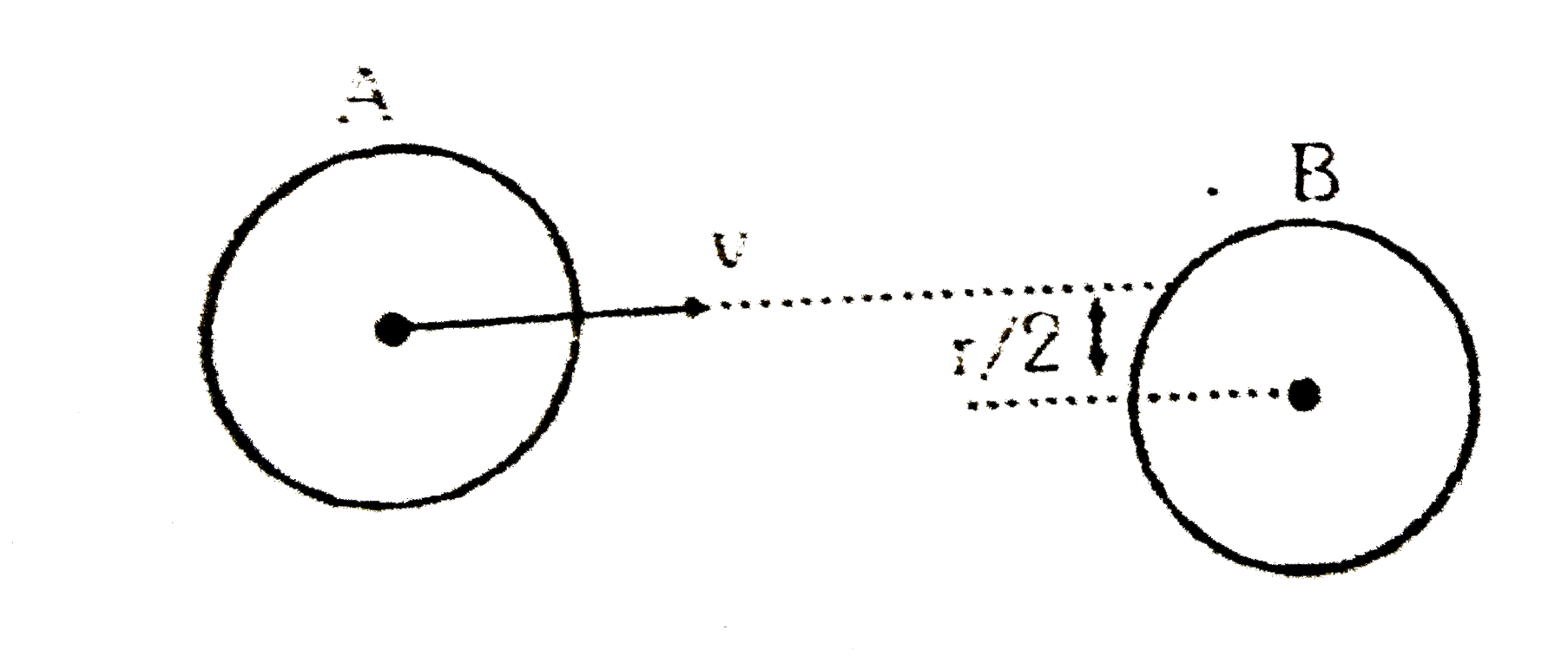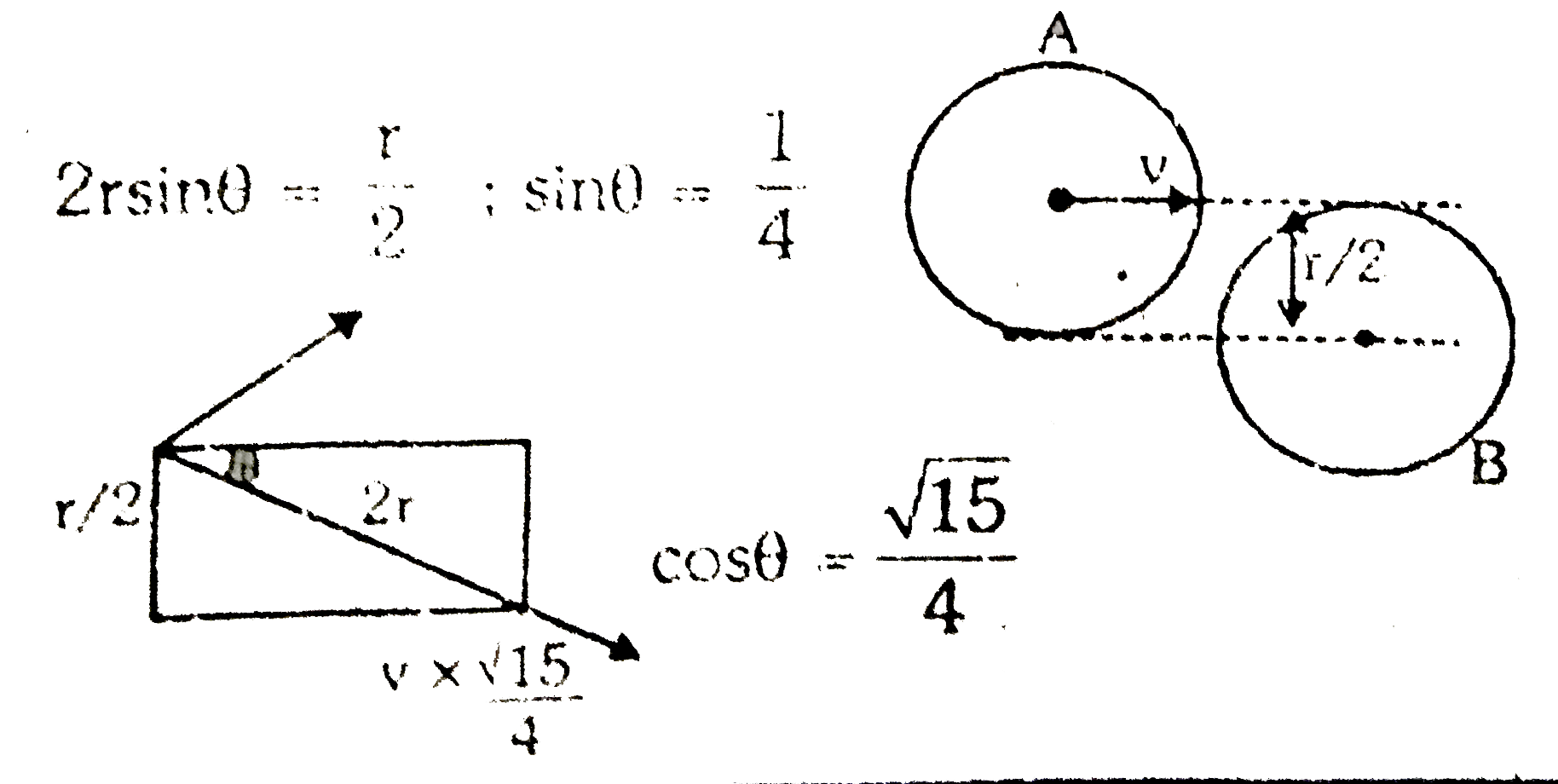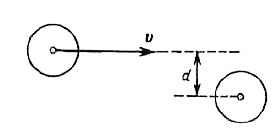A disk A of radious r moving on perfectly smooth surface at a speed v undergoes an elastic collision with an identical stationary disk B. Find the velocity of the disk B after collision if the impact parameter is r/2 as shown in the figure :-

√154v
v4
v2
√3v2
The correct Answer is:A
The velocity of the disk B after collision is

Topper's Solved these Questions
- CENTRE OF MASSBOOK - ALLENCHAPTER - CENTRE OF MASSEXERCISE - EXERCISE-III
42 Videos
- CENTRE OF MASSBOOK - ALLENCHAPTER - CENTRE OF MASSEXERCISE - EXERCISE-IV A
32 Videos
- CENTRE OF MASSBOOK - ALLENCHAPTER - CENTRE OF MASSEXERCISE - EXERCISE-I
40 Videos
- BASIC MATHEMATICS USED IN PHYSICS &VECTORS BOOK - ALLENCHAPTER - BASIC MATHEMATICS USED IN PHYSICS &VECTORS EXERCISE - EXERCISE-IV ASSERTION & REASON
11 Videos
- ELASTICITY, SURFACE TENSION AND FLUID MECHANICSBOOK - ALLENCHAPTER - ELASTICITY, SURFACE TENSION AND FLUID MECHANICSEXERCISE - Exercise 5 B (Integer Type Questions)
3 Videos
Similar Questions
A disk of radius r moving on perfectly smooth surface at a speed v undergoes an elastic collision with an identical stationary disk. Express the magnitude and the direction of the velocity of each of tho disks after the collision, as a function of tho impact parameter d (Fig. 10.7a). Calculatious to be made only for the nonrelativistic approximation.

View SolutionA ball of mass m moving with a speed u1 collides elasticity with another identical ball moving with velocity u2.
(a) Find the velocities of the balls after collision if the impact is direct.
(b) Find the angle between velocities after collision if they collide obliquely and u2=0
View Solution
Knowledge Check
A particle P moving with speed v undergoes a head -on elastic collision with another particle Q of identical mass but at rest. After the collision the collision
ABoth P and Q move forward with speed v2BBoth P and Q move forward with speed v√2CP comes of rest and Q moves forward with speed vDP and Q move in opposite direction with speed v√2.A particle P moving with speed v undergoes a head -on elastic collision with another particle Q of identical mass but at rest. After the collision the collision
ABoth P and Q move forward with speed v2BBoth P and Q move forward with speed v√2CP comes to rest and Q moves forward with speed vDP and Q move in opposite directions with speed v√2A particle P moving with speed v undergoes a head - on elastic collision with another particle Q of identical mass but at rest. After the collision
ABoth P and Q move forward with speed v2BBoth P and Q move forward with speed v√2CP comes to rest and Q moves forward with speed vDP and Q move in opposite directions with speed v√2
A neutron moving at a speed v undergoes a head-on elastic collision with a nucleus of mass number A at rest. The ratio of the kinetic energies of the neutron after and before collision is :
View SolutionA ball of mass m moving with velocity v collides head on elastically with another identical ball moving with velocity - V. After collision
View SolutionA sphere P of mass m and velocity vi undergoes an oblique and perfectly elastic collision with an identical sphere Q initially at rest. The angle θ between the velocities of the spheres after the collision shall be
View SolutionA marble going at a speed of 2ms−1 hits another marble of equal mass at rest. If the collision is perfectly elastic, then the velocity of the first marble after collision is
View SolutionTwo balls each of mass 2kg (one at rest) undergo oblique collision is perfectly elastic, then the angle between their velocities after collision is
View Solution
